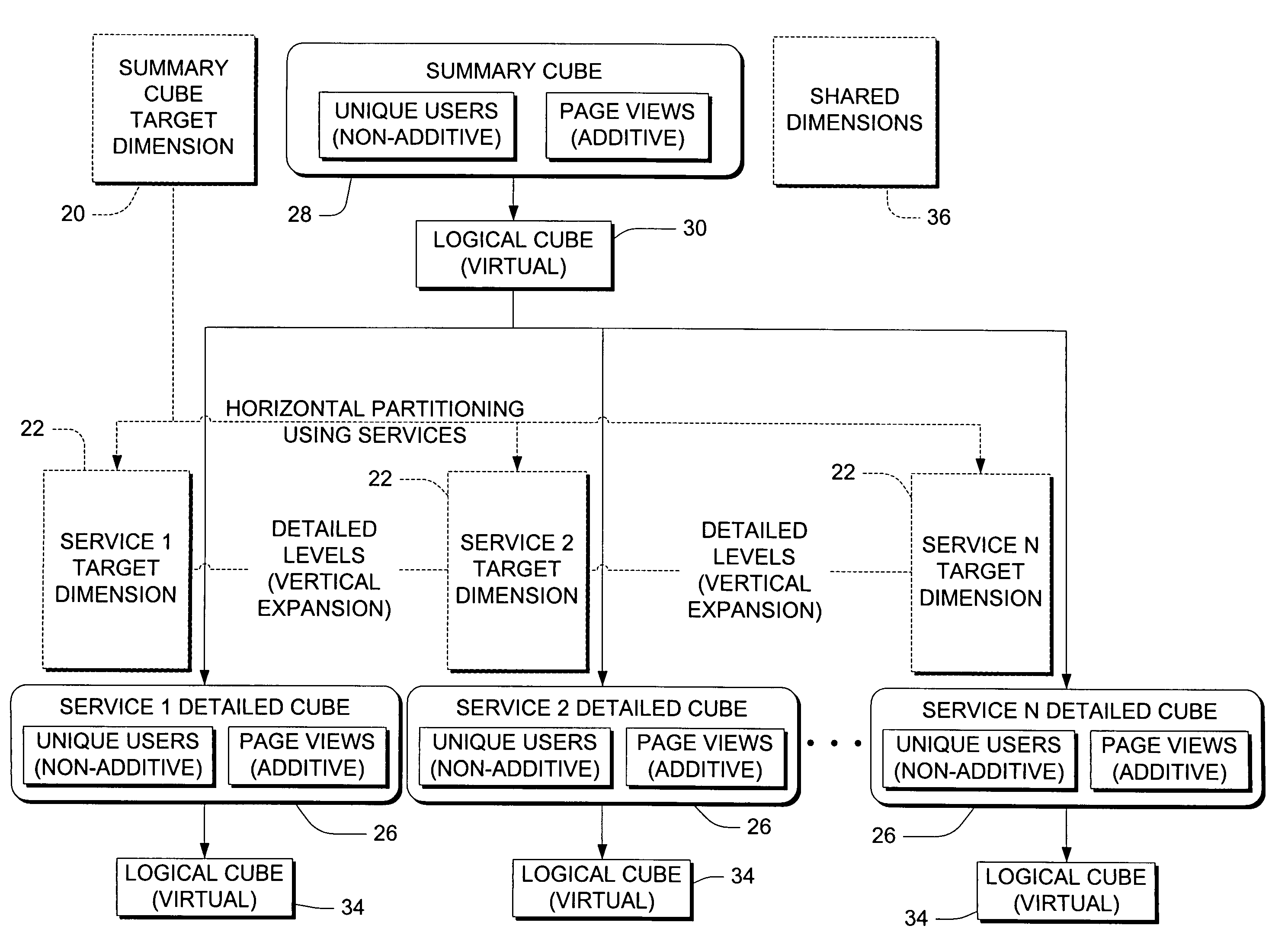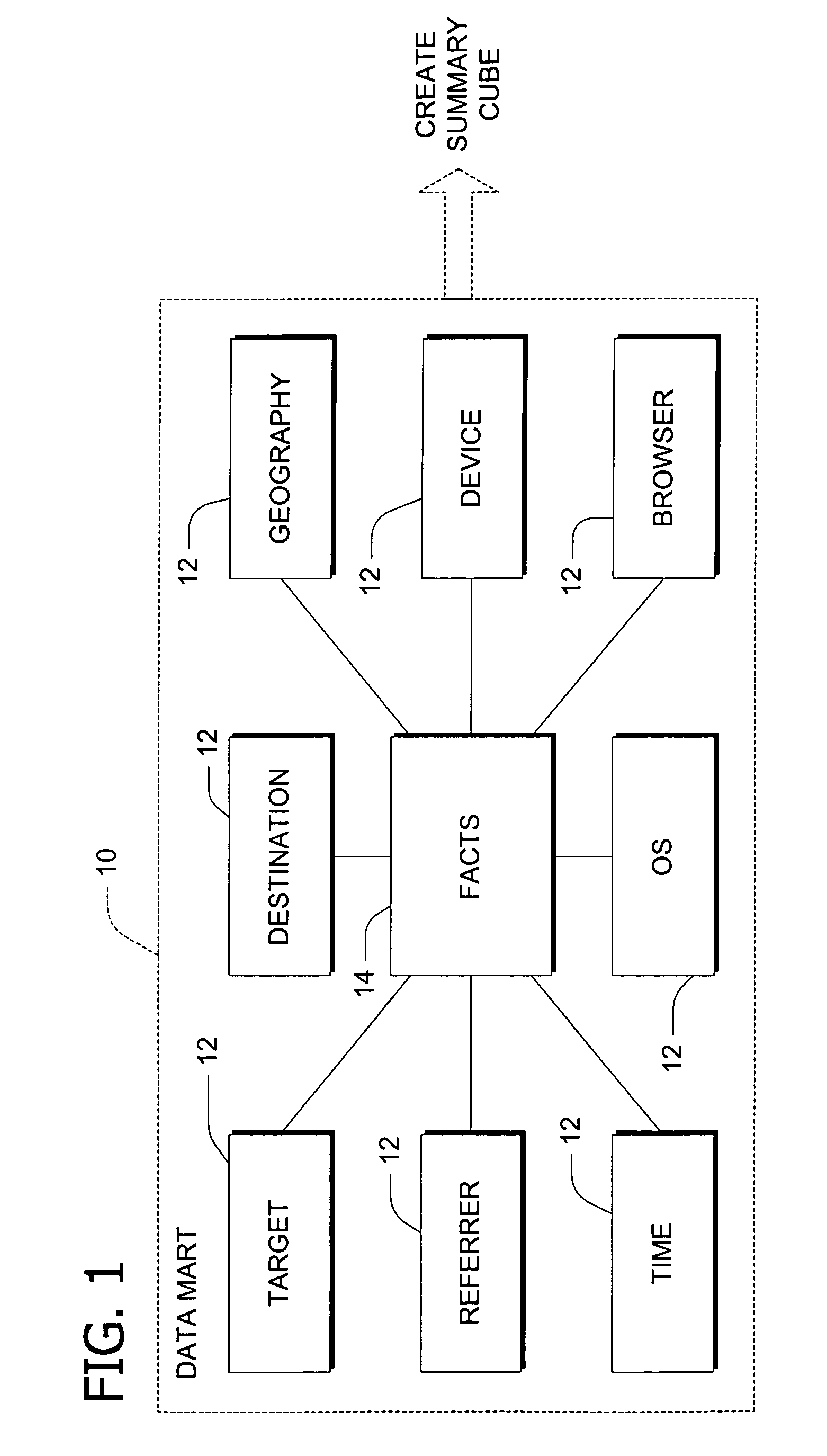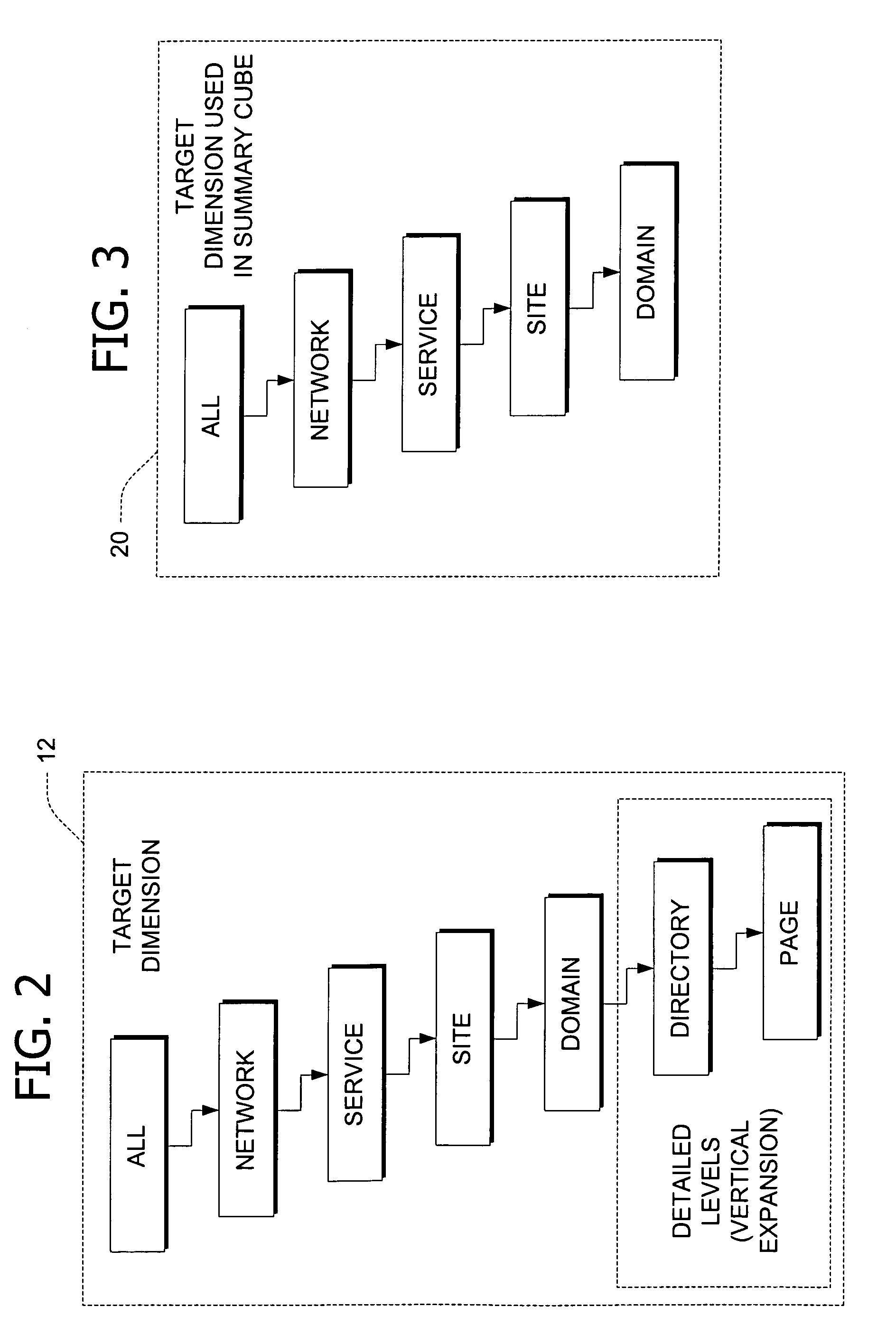Summary-detail cube architecture using horizontal partitioning of dimensions
a cube and summary technology, applied in multi-dimensional databases, data processing applications, instruments, etc., can solve the problems and reducing the amount of physical entities (e.g., html pages, web site directories) for network web usage reporting, so as to improve manageability and usability, the effect of reducing the processing tim
- Summary
- Abstract
- Description
- Claims
- Application Information
AI Technical Summary
Benefits of technology
Problems solved by technology
Method used
Image
Examples
Embodiment Construction
[0026]The present invention relates to a summary-detail cube database architecture for improved processing of large dimensions and user navigation experience. As described above, the large volume of data often presents usability, manageability, and scalability problems when processing data in a large-scale, enterprise implementation of an OLAP application. One such large-scale application involves Web usage reporting. As is well known in the art, the growing popularity of the global network referred to as the Internet has significantly increased the number of users and the number of Web sites providing services to users, including providing various types of information, offering products or services for sale, and providing games or other forms of entertainment. One embodiment of the invention is particularly useful for processing large amounts of Web usage data. In this instance, the summary-detail cube architecture enables both overview reporting (e.g., at the domain level) and sit...
PUM
 Login to View More
Login to View More Abstract
Description
Claims
Application Information
 Login to View More
Login to View More - R&D
- Intellectual Property
- Life Sciences
- Materials
- Tech Scout
- Unparalleled Data Quality
- Higher Quality Content
- 60% Fewer Hallucinations
Browse by: Latest US Patents, China's latest patents, Technical Efficacy Thesaurus, Application Domain, Technology Topic, Popular Technical Reports.
© 2025 PatSnap. All rights reserved.Legal|Privacy policy|Modern Slavery Act Transparency Statement|Sitemap|About US| Contact US: help@patsnap.com



